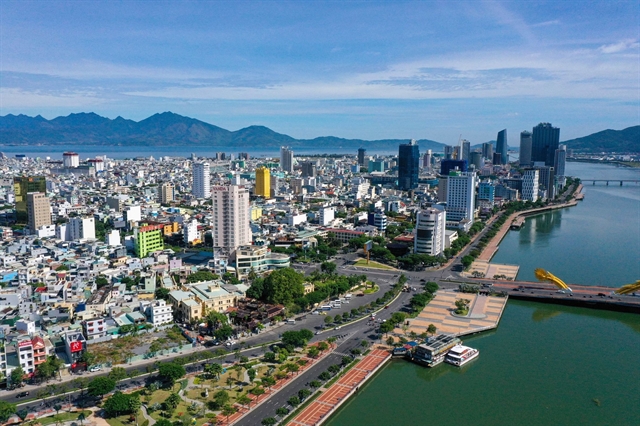 Economy
Economy


|
| On 1 January 1997, Đà Nẵng was separated from Quảng Nam Province to become one of four centrally controlled municipalities in Việt Nam. — VNA/VNS Photo Trần Lê Lâm |
ĐÀ NẴNG — President Nguyễn Xuân Phúc on Tuesday called for the central city of Đà Nẵng to become a city “worth living, worth investing in and worth experiencing” when attending a talk marking 25 years since the city was recognised as a centrally-governed city.
On January 1, 1997, Đà Nẵng was separated from Quảng Nam Province to become one of four centrally controlled municipalities in Việt Nam.
Speaking at the ceremony on Tuesday, President Phúc said that for the last 25 years, the city had gained great and comprehensive achievements in all fields.
The city had strived to become a regional socio-economic centre in central Việt Nam with a rapid pace of modernisation and urbanisation, as well as an attractive investment destination for investors.
However, the President said the city leaders must not remain satisfied with what had been done because the city had not tapped its full potential.
“Đà Nẵng must boldly compete with major cities of the Asia-Pacific region, which will be a motivation for it to become a city of international stature,” Phúc said.
The city needed to continue maintaining economic development in a sustainable way, keeping its own identity and preserving the “green lungs” that nature offers.
“We develop the city not only as a place worth investing in but also a place worth living,” Phúc said.
The President also asked the city to focus on transport, telecommunications and tourism infrastructure. The city should continue to promote the image of a safe, interesting and hospitable destination.
The city was asked to strongly develop the digital economy and digital city in which digital transformation was considered the driving force for breakthroughs.
The key to the city's success lay in its ability to awaken human potential, especially human resources with competent foreign language and technology skills meeting requirements of the Fourth Industrial Revolution, Phúc said.
He asked the city government to forecast the labour demand and training needs to meet the requirements of the market and investors.
“Education and training are the most powerful tools for Đà Nẵng to thrive in the era of digital technology and innovation,” Phúc said.
“It is necessary to establish programmes to make Đà Nẵng a worth living, worth investing and worth experiencing city so that it would be soon ranked one of the world's top livable cities according to international rankings,” Phúc said.
According to Nguyễn Văn Quảng, Secretary of the City Party Committee, starting with fragmented planning, poor infrastructure, difficult traffic connections and social security problems, Đà Nẵng is now in the group of developed economies of Việt Nam.
The city’s urban space has expanded 3.5 times since 1997. Many practical effective social security policies and major investment projects generated positive results and impacts on people’s lives.
In July 2003, Đà Nẵng was recognised as a national grade I city. In particular, to help the city have breakthrough mechanisms for long-term and sustainable development, the Politburo issued Resolution No. 33 on October 16, 2003 on "building and developing Đà Nẵng City during the national industrialisation and modernisation". Those are important historical milestones that helped the city gain new motivations, quickly transform, promote its potentials and advantages so that the city can rise to play the role of a major city in the central and Central Highlands regions.
However, the city currently faces many challenges including an economic slowdown and pending problems relating to land use, investment and construction violations in the city.
Lê Trung Chinh, Chairman of the city People's Committee, said that the city's economy had developed comprehensively over the past 25 years and achieved a good growth rate.
In the 1997-2020 period, GRDP increased rapidly and continuously with an average growth rate of 8.9 per cent per year, GRDP per capital increased 15 times compared with 1997.
The structure of the economic sector had a positive shift, in which the service sector took the lead with commercial tourism, postal, telecommunications, information technology, transportation - warehousing, and finance - banking.
Tourism had become a key economic sector with a series of investment projects and international quality services, forming a competitive regional brand. Đà Nẵng had gradually become an attractive, safe and friendly destination for domestic and foreign tourists.
Đặng Huy Đông, former Deputy Minister of Planning and Investment, suggested the city should develop with three main pillars including tourism and trade, a hub of processing, export, transporting of goods and logistics services for the central economic zone and to build a knowledge-based economy. — VNS




